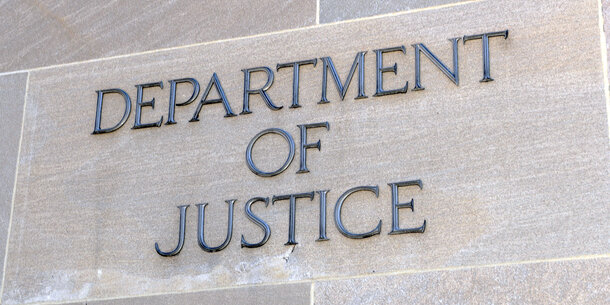New York City’s main jail complex, Rikers Island, is in crisis. So far this year, five people have died from causes ranging from suicide to a likely drug overdose. And a state judge recently held the city’s correction department in contempt for failing to provide detainees with timely medical care.
In April, federal prosecutors intimated more aggressive judicial treatment — namely, a receivership — might be necessary. The city counters that it has the will, expertise, and capacity to dramatically improve the complex. By June 10, the city must submit a revised plan to the court for addressing the dysfunction and violence at Rikers.
A receivership would denote a major development in the decades-long struggle to reform one of America’s most infamous and expensive jail systems.
What is a receivership?
A receivership is a legal remedy in lawsuits seeking to reform jails and prisons. Used when all other tactics have failed, it strips the government of control and puts a neutral, court-appointed expert — the “receiver” — in charge. The Supreme Court has noted that a receivership “is not an end in itself” — it’s merely a stopgap designed to address egregious rights violations. In cases striving to remake public institutions, receivership is the most intrusive tool in a court’s arsenal, short of outright closure. After a receivership brings an institution into compliance with the law, the court will return control to the government.
Judges typically give receivers wide-ranging authority such as the power to manage staff, make contracts, access government records, conduct confidential interviews, procure goods, and set budgets.
What is the history of receivership?
Receivership is far from new. With origins stretching back to the reign of Queen Elizabeth I, the mechanism made its debut in American jurisprudence in the 19th century. It was used early on to protect property and monetary assets and occasionally to reorganize corporations. But in the 1960s, courts repurposed the tool to seize control of public schoolhouses determined to resist the Supreme Court’s Brown v. Board of Education ruling, which held unconstitutional the segregation of schoolchildren by race.
And it worked. Receiverships spurred a good deal of school integration, and that success inspired judges to expand the use of the tool to other problem-ridden social institutions, like mental health agencies, child protection services, public housing, prisons, and jails.
How does a correctional receivership happen?
The road to a correctional receivership is paved with several steps. After a class of people sue a prison or jail alleging it has violated their rights, a court will often issue an order aiming to force the facility to comply with federal law.
But sometimes governments fail. Perhaps a cash-strapped state legislature refuses to allocate sufficient corrections funding to one of its localities, preventing the operation of a constitutionally adequate jail. Or perhaps state officials just think a federal court ill-suited to manage its local affairs. No matter the reason, courts have several tools to encourage compliance, like enlisting experts to monitor the facility or holding the government in contempt.
Only when noncompliance persists can a court consider receivership. A party can request it, or a court on its own can compel the government to “show cause” why it shouldn’t appoint a receiver.
The decision to appoint a receiver is solely within the court’s discretion — but that discretion isn’t limitless. Taking a jail or prison away from the government so that a court can manage it represents a drastic departure from a court’s typical work. For that reason, federal statutory law and decades of legal precedent require judges to show they’re imposing a receivership as a last resort. Once a court opts for receivership, however, it wields virtually unfettered discretion in designing it.
Have receiverships been imposed on jails or prisons before?
Yes, but they are rare. Federal and state judges have ordered receiverships or a similar transfer of control for prisons and jails only about 12 times. Judges have generally placed prisons and jails into receivership to deal with poor conditions caused by chronic overcrowding.
What are the advantages and disadvantages of receivership?
Receivership can bring about some sorely needed improvements. A receivership unchains a broken institution from failing political and bureaucratic systems. For example, a receivership can take control of a public housing agency the government refuses to properly manage or adequately fund. A receiver can act unilaterally and swiftly in ways that a judge and the government can’t.
As court officers, receivers are insulated from political pressure and can thus act in the best interest of an institution. They can also petition a court to exercise its powers to remove obstacles impeding legal compliance.
But receivership isn’t a panacea; it also carries some risks. Although it displaces the government from control of a public institution, a receiver typically still depends on legislatures for funding. A receivership could fail if the receiver is a poor fit for the role. For example, a federal judge in Alabama recognized that the policy preferences of the state’s governor might well complicate the governor’s ability to serve effectively as a receiver — and yet the judge appointed the governor as receiver of the Alabama prisons anyway. The receivership struggled as a result: the governor took several steps, such as opposing a potential court order to release prisoners, that undermined the court.
And even when receivership succeeds, it’s still an imperfect tool. A receiver’s gains might erode when the government reassumes control. Finally, despite benefitting from the expertise of a receiver, judges lack the expertise to serve as long-term institutional administrators.
UPDATE: The number of receiverships ordered in the past has been clarified to say that it includes methods that transfer control but are not technically receiverships, and the number was changed from seven to approximately eight.



